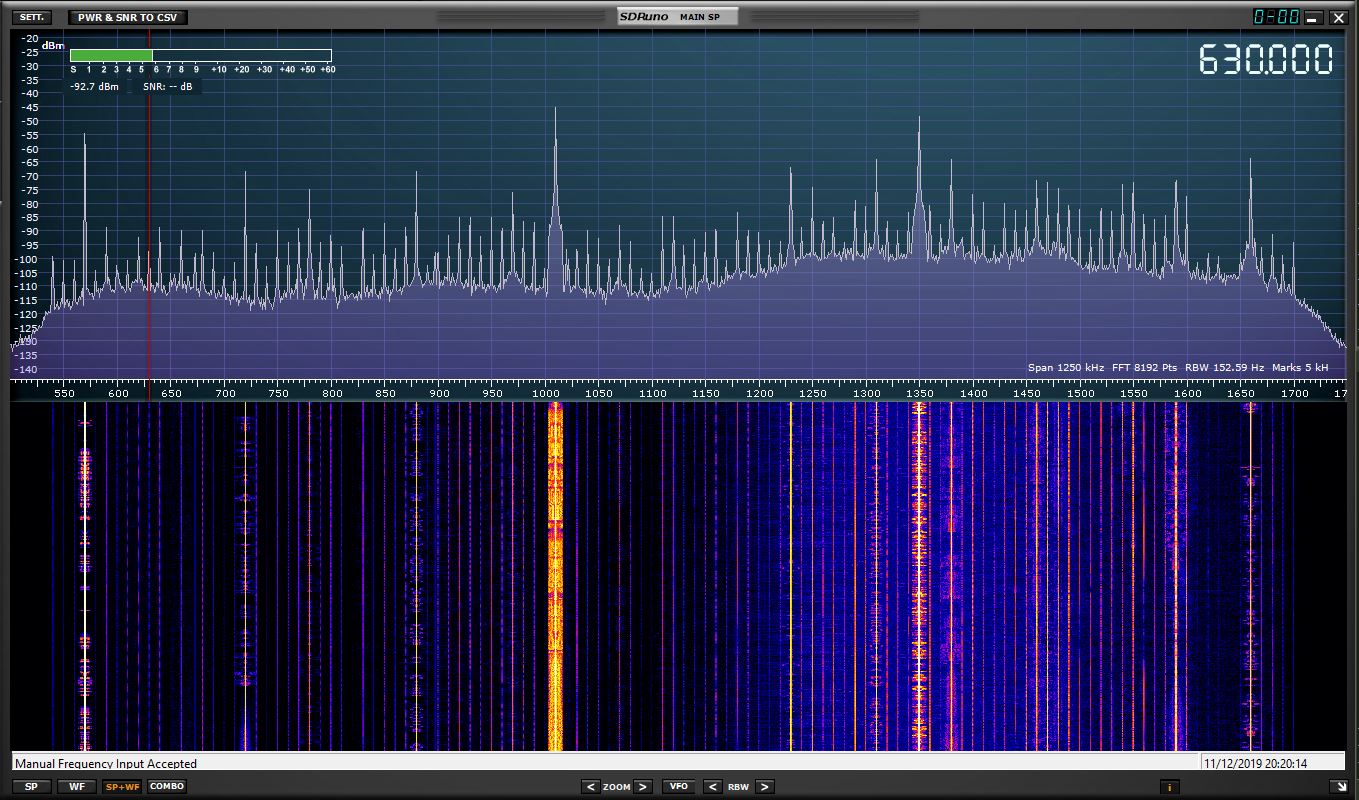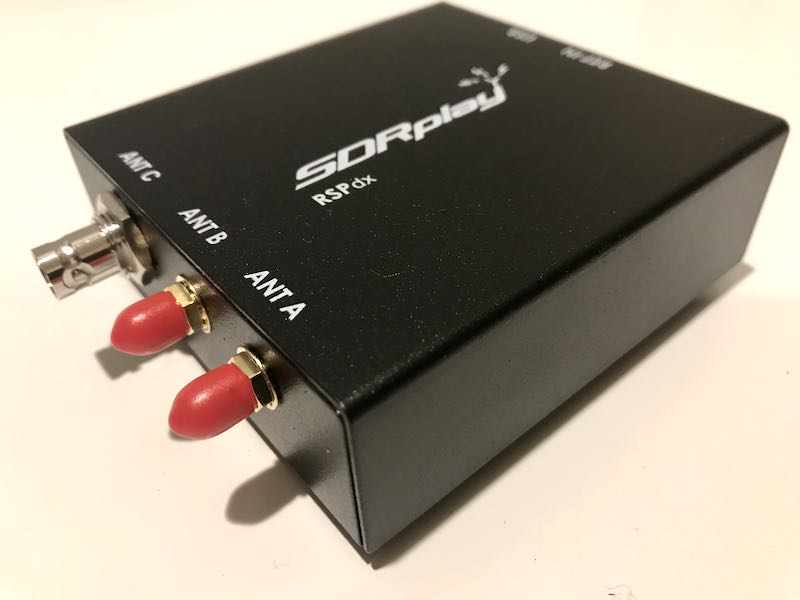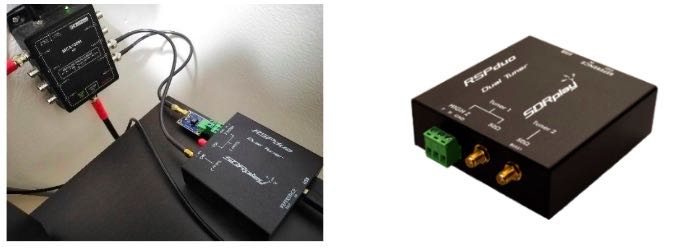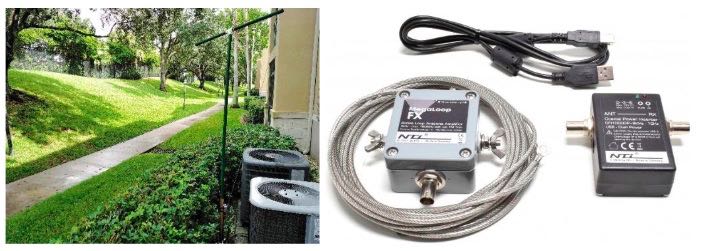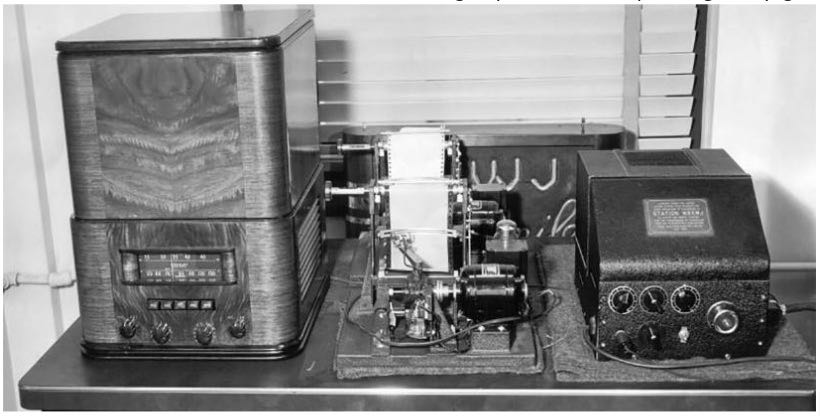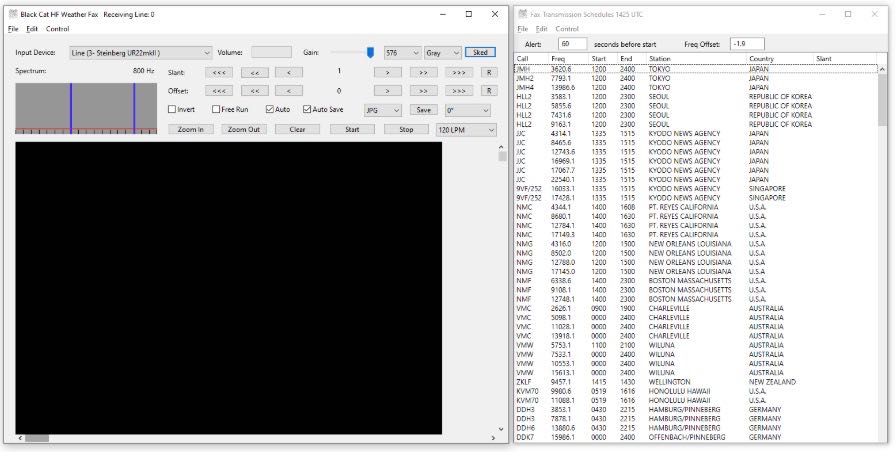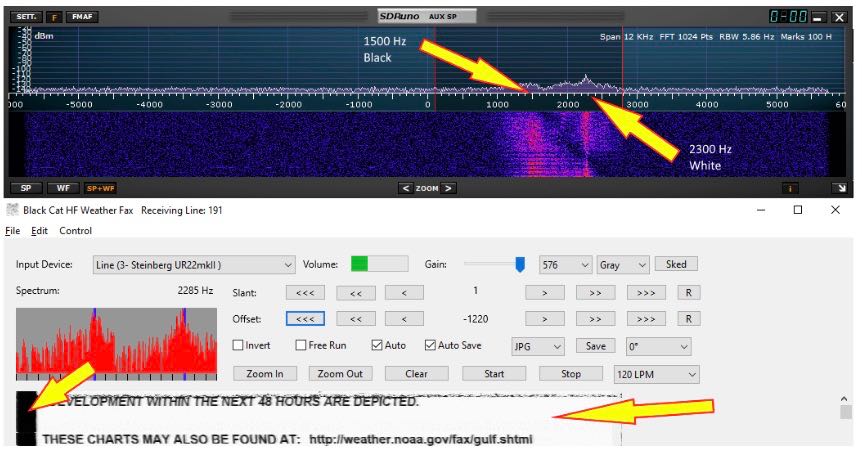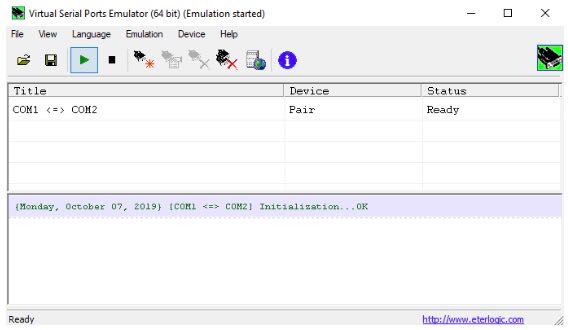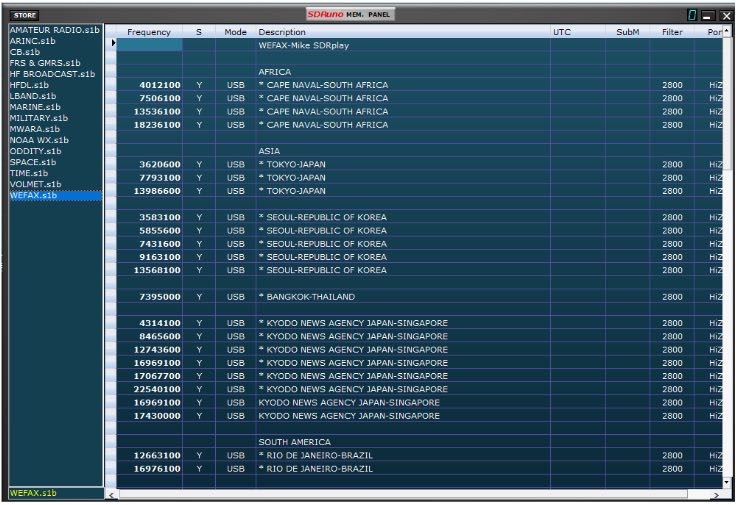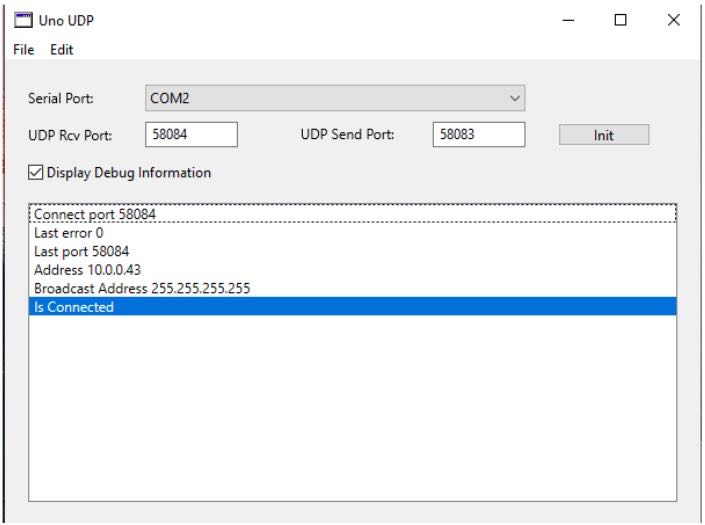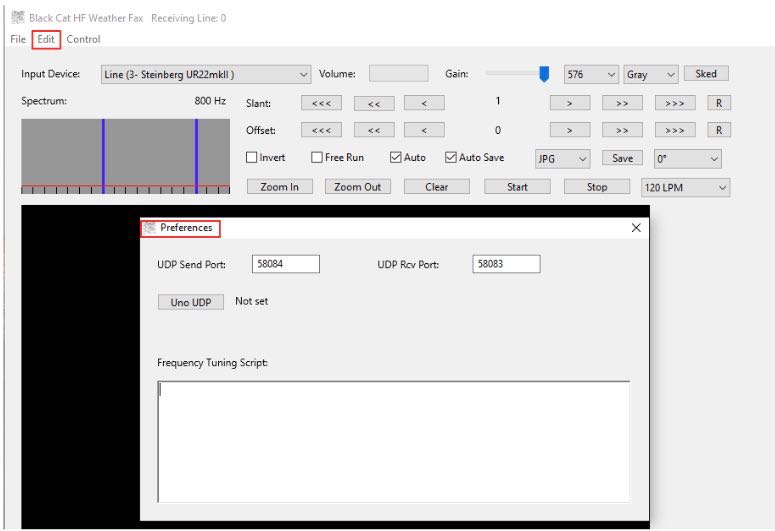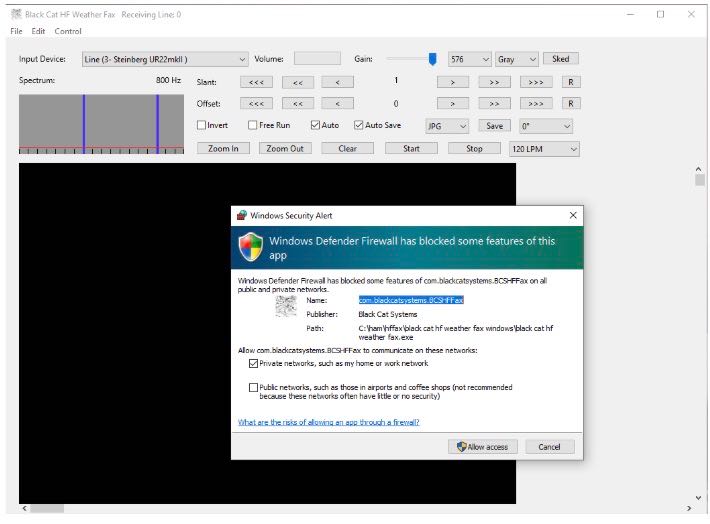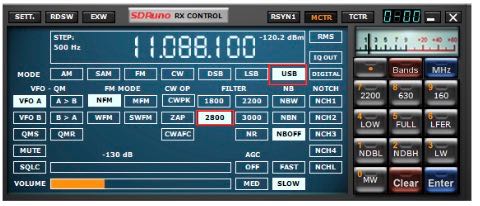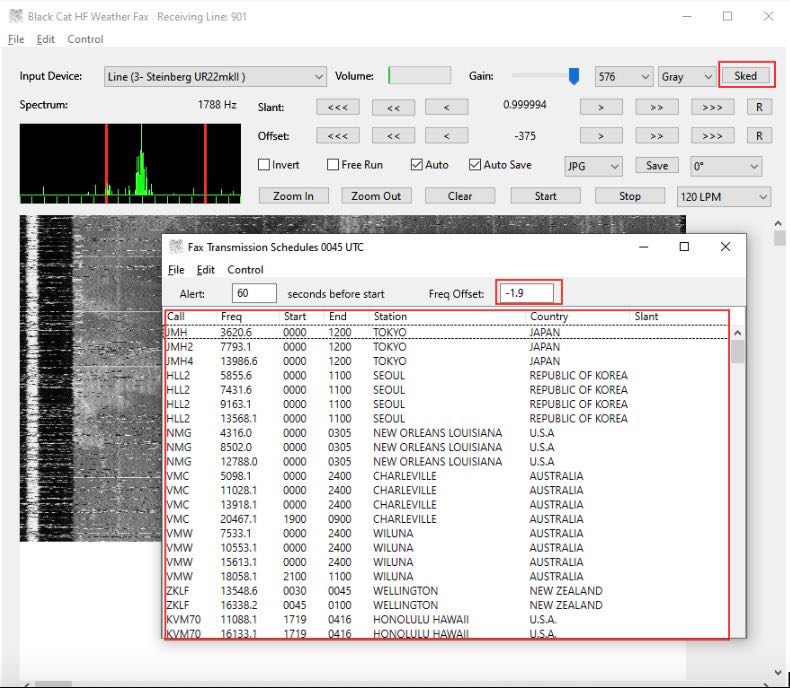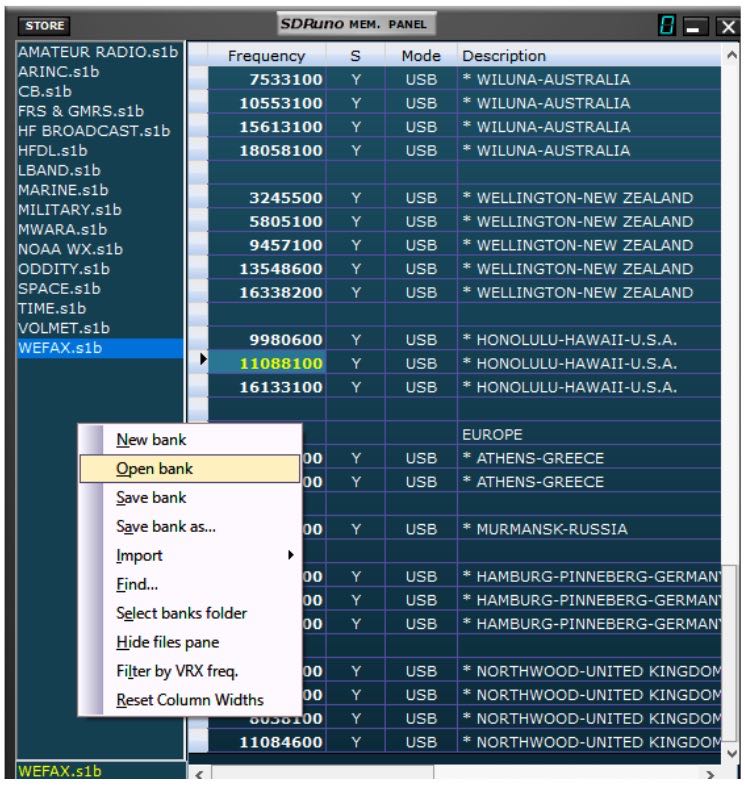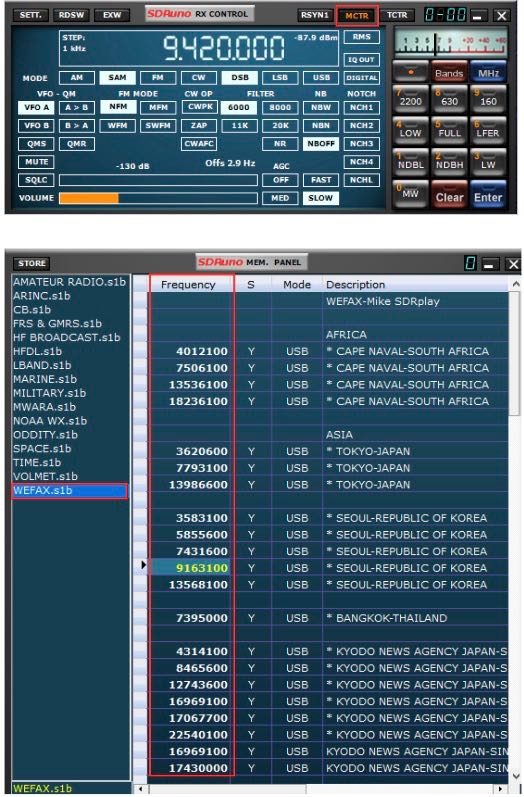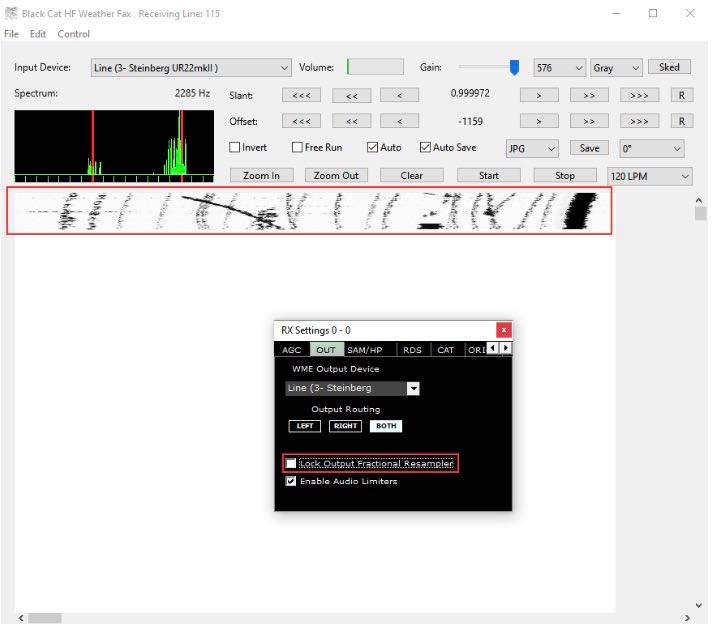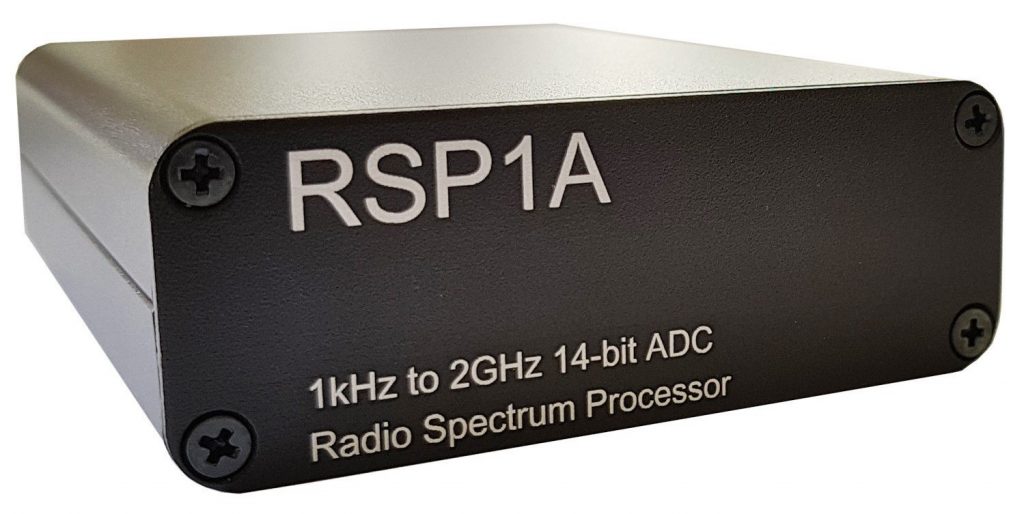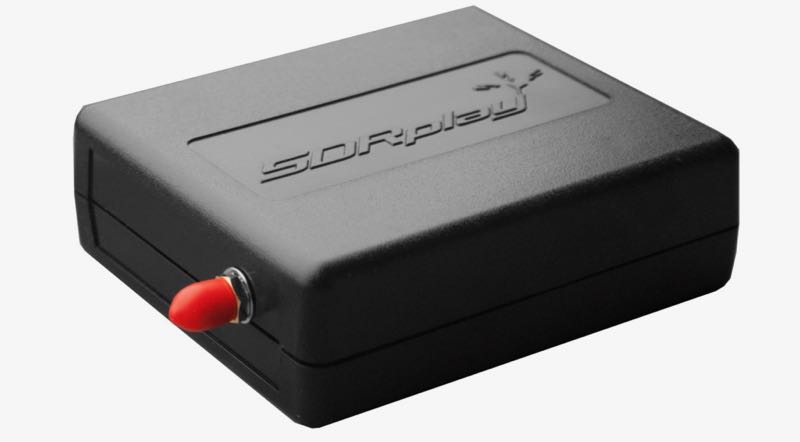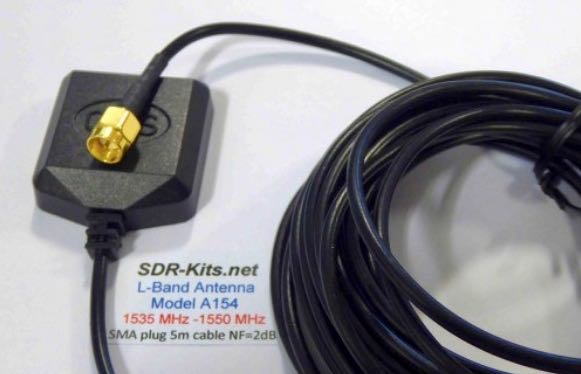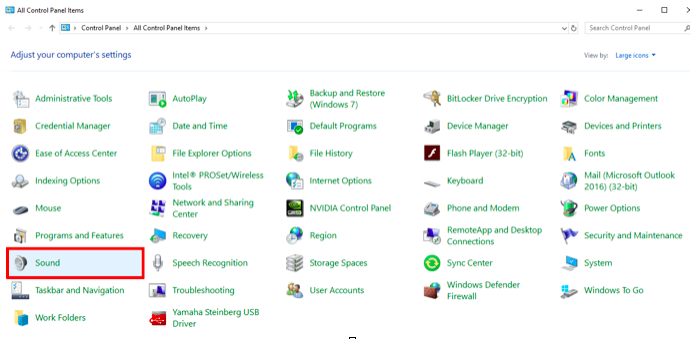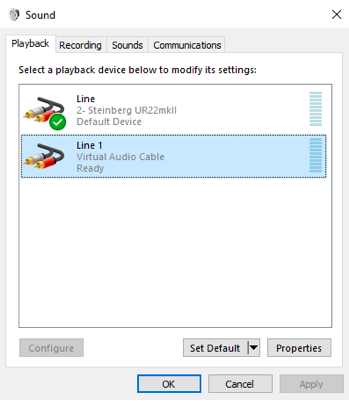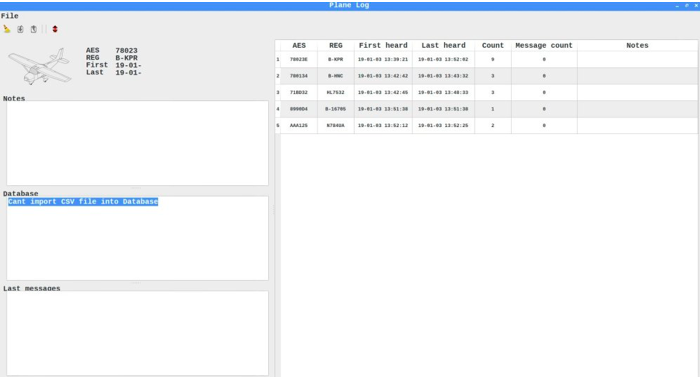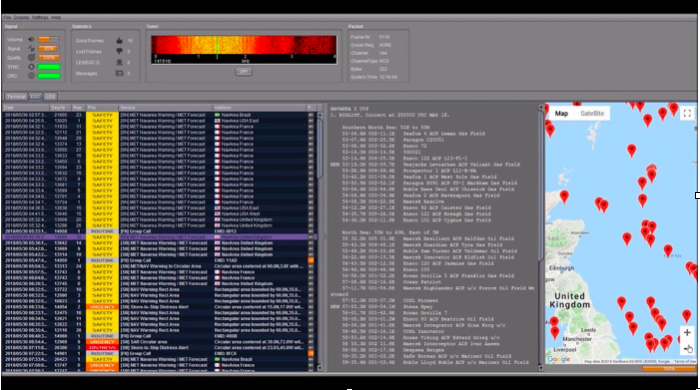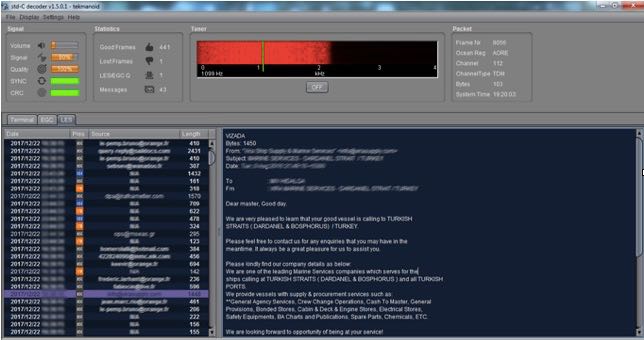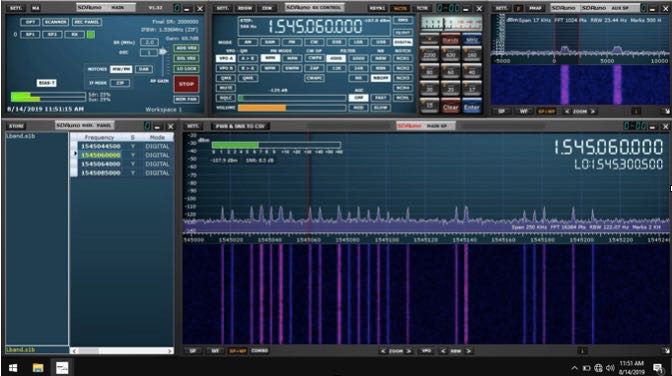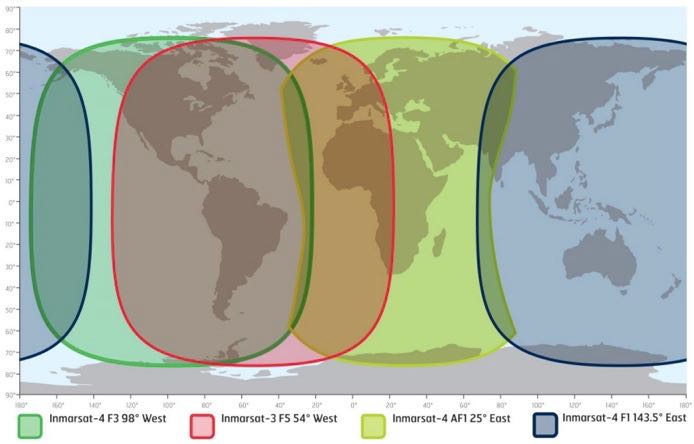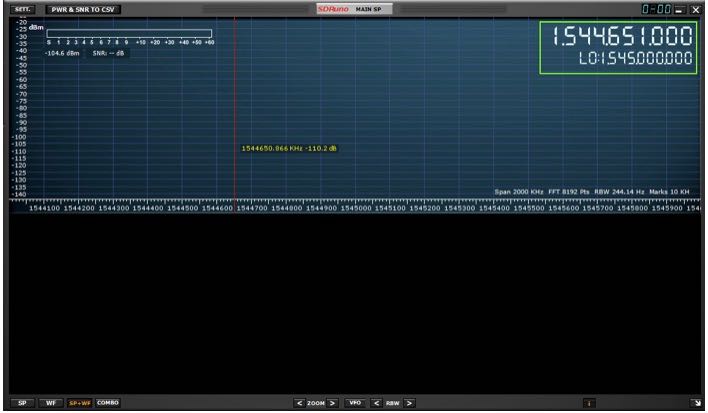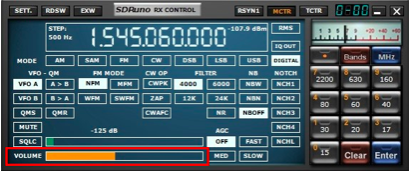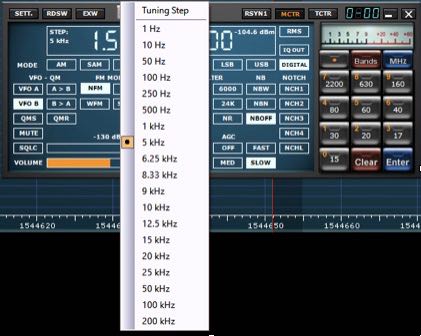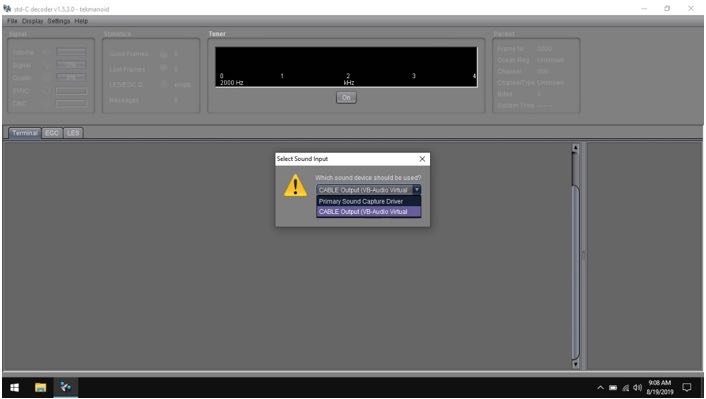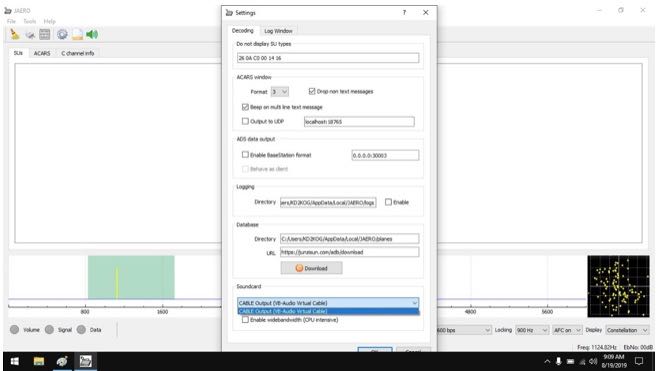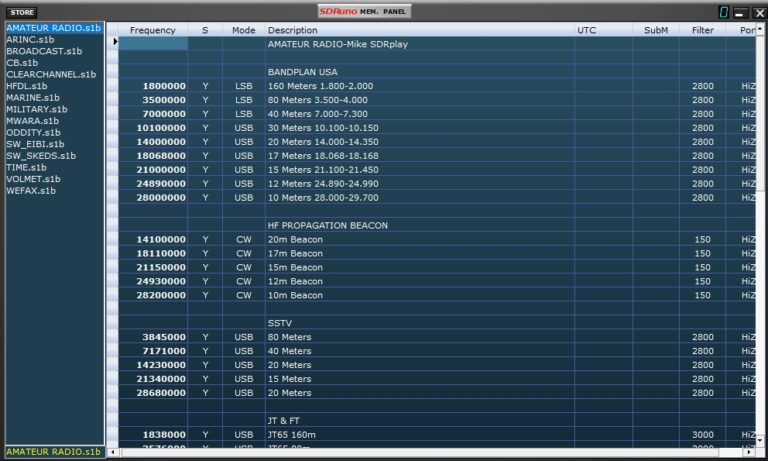 Many thanks to Mike Ladd at SDRplay who notes that he has posted his extensive SDRuno frequency banks on the SDRplay website. If you aren’t a frequent user of SDRuno’s memory banks, I would highly recommend loading Mike’s frequencies as a means of a little radio frequency discovery!
Many thanks to Mike Ladd at SDRplay who notes that he has posted his extensive SDRuno frequency banks on the SDRplay website. If you aren’t a frequent user of SDRuno’s memory banks, I would highly recommend loading Mike’s frequencies as a means of a little radio frequency discovery!
Tag Archives: Mike Ladd
SDRplay has added sample IQ files to their website
Many thanks to Mike Ladd at SDRplay who notes that they have added a new IQ Demo Files page to the SDRplay website.
Here’s the intro:
IQ Demo Files
Here you can find off air IQ recordings for you to check your SDRuno and related software settings for a variety of different situations.
If you don’t already have an RSP, because these demo files have been recorded using an RSPdx, you can get to see and hear exactly how SDRuno works in conjunction with an RSPdx. Simply download a copy of SDRuno from https://www.sdrplay.com/sdruno/ and follow the instructions below to select the WAV file input using one of the IQ files below. (Please note these are not traditional audio “WAV” files – the WAV format is used as a wrapper to contain these very large data files (100s of MBytes) containing the stream of data normally exchanged over the USB cable between RSP and computer)
If you have an RSP and are configuring software for specific types of signal decoding, we have included a number of sample IQ demo recordings you can use to check your setup before looking for real world signals.
Mike Ladd’s primer on decoding NAVTEX using an SDRplay SDR with SDRuno
Many thanks to SWLing Post contributor, Mike Ladd with SDRplay, who shares the following PDF primer on decoding NAVTEX with an RSP series SDR.
Click here to download “Basics to decoding NAVTEX using an RSP and SDRuno” (PDF).
Thanks for sharing this excellent guide, Mike. Without a doubt, SDRplay has some of the best documentation and primers in the world of radio. Click here to check out more.
Also, check out Mario’s post, from our archives, which discusses decoding NAVTEX, RTTY, and Sitor B.
Mike compares the SDRplay RSPdx on mediumwave and longwave
Many thanks to SWLing Post contributor, Mike Ladd with SDRplay, who shares the following videos comparing the new RSPdx with a number of benchmark SDRs:
SDRplay RSPdx and ELAD FDM-S2 weak NDB station
SDRplay RSPdx and ELAD FDM-S2 medium wave selectivity
https://youtu.be/ah5Zu8qgvp8
SDRplay RSPdx and Airspy HF+ Discovery medium wave selectivity
SDRplay RSPdx and Airspy HF+ Discovery weak NDB station
SDRplay RSPdx and Microtelecom Perseus medium wave selectivity
SDRplay RSPdx and Microtelecom Perseus weak NDB station
Guest Post: Decoding WEFAX using an RSP SDR and SDRuno
Many thanks to SWLing Post contributor, Mike Ladd with SDRplay, who shares the following guest post:
Basics to decoding WEFAX using an RSP and SDRuno
by Mike Ladd
SDR I use:
RSPduo from SDRplay using the Hi-Z input. Any model RSP’s can tune WEFAX transmissions. https://www.sdrplay.com/rspduo/
Antenna I use: Megaloop FX from Bonito. In an Inverted delta loop configuration pointed N/E-S/W. Any good antenna placed outdoors should be fine. It’s all about the SNR, not your S-meter reading. https://www.bonito.net/hamradio/en/mega-loop-fx/
Software:
SDRuno v1.32
SDRuno is an advanced Software Defined Radio application platform which is optimized for use with SDRplay’s range of Radio Spectrum Processing receivers.
https://www.sdrplay.com/downloads/
VBcable (donationware) vPack43
Transfers audio, digitally from one application (SDRuno) to another (Black Cat HF weather Fax) with zero loss.
https://www.vb-audio.com/Cable/
VAC (paid for use) v4.60
Transfers audio, digitally from one application (SDRuno) to another (Black Cat HF weather Fax) with zero loss.
https://vac.muzychenko.net/en/
https://www.sdrplay.com/docs/SDRuno_VAC.pdf
Black Cat HF Weather Fax (paid for use) beta 19
Decodes and produces images from the WEFAX transmissions from the output of SDRuno using a virtual audio cable.
Use the discount link available here
http://blackcatsystems.com/register/black_cat_hf_weather_fax_sdrplay_promo.html
https://www.blackcatsystems.com/software/hf_weather_fax.html
Black Cat Uno UDP
UnoUDP allows you control SDRuno’s VFO frequency from within Black Cat HF Weather Fax scheduler. This is done over a virtual com port pair using a virtual com port emulator. http://blackcatsystems.com/download/UnoUDP.zip
VSPE or COM0COM
VSPE is a paid for use app. COM0COM is completely free. Either one of these applications will work. A virtual com port emulator allows you to create a virtual com port. The pair will internally link Black Cat Weather Fax decoder to SDRuno’s using UnoUDP as the transport protocol.
VSPE http://www.eterlogic.com/Products.VSPE.html
https://www.sdrplay.com/docs/SDRuno_VSPE.pdf
COM0COM http://com0com.sourceforge.net/
https://youtu.be/dZg7puQ9Ajk
Introduction:
(some text taken and edited from various website)
This document is not a definitive guide to the WEFAX protocol, the process of decoding WEFAX images or reading a synoptic weather chart https://youtu.be/kzfNSvQREu8. This is only a collection of information that I have found scatter throughout the internet and re-compiled into a document, this document. Expect typographical mistakes, inaccuracies, or omissions.
WEFAX is an analog mode for transmitting monochrome images. It was the predecessor to slow-scan television (SSTV). Prior to the advent of the commercial telephone line “fax” machine, it was known, more traditionally, by the term “radio facsimile”.
Facsimile machines were used in the 1950s to transmit weather charts across the United States via land-lines first and then internationally via HF radio. Radio transmission of weather charts provides an enormous amount of flexibility to marine and aviation users for they now have the latest weather information and forecasts at their fingertips to use in the planning of voyages.
Radio fax relies on facsimile technology where printed information is scanned line by line and encoded into an electrical signal which can then be transmitted via physical line or radio waves to remote locations. Since the amount of information transmitted per unit time is directly proportional to the bandwidth available, then the speed at which a weather chart can be transmitted will vary depending on the quality of the media used for the transmission.
Radio fax data is available from the web on sites such as the ones hosted by the National Oceanic and Atmospheric Administration (NOAA). https://tgftp.nws.noaa.gov/fax/marine.shtml Radio fax transmissions are also broadcasted by NOAA from multiple sites in the country at regular daily schedules https://www.nws.noaa.gov/os/marine/rfax.pdf. Radio weather fax transmissions are particularly useful to shipping, where there are limited facilities for accessing the Internet.
Black Cat HF Weather Fax is a program that decodes WEFAX (Weatherfax, HF-FAX, Radiofax, and Weather Facsimile) transmissions sent from fixed locations around the globe.
A fax is transmitted line by line, typically at a rate of 120 lines per minute, or half a second per line. For example, to send a weather chart, you would start in the upper left corner. You would send the value of that pixel (dot), black, white, or perhaps a shade of gray. Then you would move over one pixel to the right, and send that pixel, and so on, until you reach the edge of the chart. Then you’d move all the way back to the left edge, and move down slightly, one line, and repeat the process.
Each pixel is converted into a certain audio frequency or tone. By convention, a tone of 1500 Hz represents black, 2300 Hz represents white, and frequencies in-between represent shades of gray. So if you listen to a fax transmission, you’ll hear the different tones as each pixel is present. For example, listen to a chart with mostly white background being sent. You’ll hear mostly the high pitch 2300 Hz, and some lower (1500 Hz) blips as each black pixel is sent. When a horizontal line is sent, you’ll hear a long half second burst of 1500 Hz, since the line is all black.
The transmitting station frequency modulates the carrier. That is, when a black pixel is transmitted, the carrier shifts down 400 Hz. When a white pixel is transmitted, the carrier shifts up 400 Hz. For a medium gray pixel, it stays on the assigned frequency. This is how most fax transmissions are made. Since we’re tuning it in SSB, it sounds to us as if the station is transmitting a variable frequency audio tone. The two processes are identical. This accounts for the confusion regarding what frequency to tune the radio to in order to properly decode the fax transmission. Different stations list their frequency in different ways. It is important to remember that a black pixel produces a 1500 Hz tone, and a white pixel produces a 2300 Hz tone within the AUX SP.
The setup works as follows. SDRuno demodulates the received signal. The demodulated audio is piped from SDRuno using virtual audio cable and sends it to the HF weather fax decoder. HF weather fax decoder receives this audio from the virtual audio cable that was demodulated from SDRuno and processes it, producing a picture on the screen
HF weather fax decoder can also set the VFO (tune) frequency of the RSP in SDRuno. This is done over the virtual com port pair using the UnoUDP application as the transport.
SDRuno can internally emulate a Kenwood TS-480, UnoUDP sends the Kenwood TS-480 serial commands via UDP over the virtual com port pair in order to set the frequency selected from the HF Weather Fax Scheduler option over to SDRuno.
You will need to install and configure the following applications.
1: A virtual audio cable.
2: A virtual com port emulator (If you would like HF Weather fax to communicate with SDRuno).
3: UnoUDP (If you would like HF Weather fax to communicate with SDRuno using the virtual serial emulator).
4: HF Weather Fax.
5: A simple wire antenna placed outdoors.
Virtual Audio Cable:
A virtual audio cable allows you to pipe the audio from one application (SDRuno) into another application (a decoder like HF Weather Fax) digitally. I will assume SDRuno is already installed with your device attached and functioning properly.
You can now download a virtual audio cable package. If you already have a virtual audio cable package installed, you can skip to the next section. If you don’t have a virtual audio cable application installed, you only need to choose one and install only one of the two that are available.
Close any running apps, install the virtual audio cable and reboot your computer. When your computer boots to your desktop, your computer will now have a virtual audio cable pair installed on the system.
You can verify it the installation by going to your Control Panel and double clicking the Sound icon. VB-Cable and Virtual Audio Cable will only install a single virtual audio cable pair, one is for the input (Recording) and one is for the output (Playback). A single pair is all that is needed (as shown below).
Virtual Serial Port:
A virtual com port emulator is only needed if you would like Black Cat HF Fax decoder the ability to tune the station in SDRuno when you double click a station name in the HF Fax Decoder scheduler.
Please use the links provided (additional PDF’s and YouTube videos) on Page 2 of this document for an installation / configuration walkthrough.
You can download my WEFAX frequency bank for use in SDRuno below should you choose not to use a virtual com port emulator. https://signalsacrossthepond.com/download/mike-kd2kog-sdrplay-complete/
Download Black Cat HF Weather Fax and UnoUDP:
Download the latest HF Weather Fax beta package and the UnoUDP application from the link provided on Page 2 of this document. I suggest making one main folder called HFfax and two subfolders within HFfax for each of the applications. One folder is for the HF Weather Fax Decoder and the other folder is for the UNO UDP transport application.
Double click the HF Weather Fax beta ZIP file you downloaded and extract the full contents of this ZIP into the folder you created on your local drive. Right click the “Black Cat Weather Fax” EXE file and send a shortcut to your Desktop.
Double click the UnoUDP zip file you downloaded and extract the full contents of this ZIP into the folder you created on your local drive. Right click the “UnoUDP” EXE file and send a shortcut to your Desktop.
You should have two shortcuts on your desktop, One for the decoder and one for the transport app.
Black Cat UnoUDP:
HF Weather Fax needs a way to communicate with SDRuno, this is done via UnoUDP and the virtual com port emulator.
Launch UnoUDP with the above configuration. Set your UDP Receive port to 58084 and your UDP send port to 58083. UnoUDP must be left running in the background, this will control SDRuno. You can minimize the application or right click the shortcut and have UnoUDP auto minizine on launch.
You should see a Firewall popup prompt asking permission to allow UnoUDP to pass data within the system. You must allow this traffic to pass or external control of SDRuno will not be possible from the HF Weather Fax decoder scheduler.
Assign 1 of the 2 com ports from the virtual com port emulator to UnoUDP (the 2nd com port will be assigned to SDRuno). My com port pair is Com 1 and Com 2, SDRuno uses Com1 and UnoUDP uses Com 2.
Black Cat HF Weather Fax:
HF Weather Fax needs to be configured in order to communicate with UnoUDP, this is done via the UDP settings. Click “Edit” and “Preferences” Set the UDP Send port to 58084 and the UDP Receive port to 58083.
You should see a Firewall popup prompt asking permission for HF Weather Fax to pass data within your system. You must allow UDP traffic to pass or external control of SDRuno will not be possible from the HF Weather Fax decoder scheduler.
SDRuno:
SDRuno needs its Output assigned to the Virtual Audio Cable. The output can be changed via the RX CONTROL panel, clicking the SETT. button on the top left and clicking the OUT tab.
SDRuno needs a com port assigned so it can be externally controlled. The serial port is assigned via the RX CONTROL panel, clicking the SETT. button on the top left and clicking the CAT tab.
I recommend running the RSP in LOW-IF mode, this is selected via the MAIN panel. This reduces the need to track separation between the Tuned frequency and LO (local oscillator) https://youtu.be/Fsns4P3JxrM
LOW-IF mode also minizines the LO being placed outside of the desired preselect filter of the device in use, Remember the preselect filter is automatically enabled based on the LO frequency https://youtu.be/w-vkiVp7Q4E
I also recommend leaving the IF AGC enabled and placing the RF GAIN as high as possible without causing an ADC OVERLOAD warning within the MAIN panel. If an ADC OVERLOAD warning appears, back the RF GAIN down.
https://www.sdrplay.com/wp-content/uploads/2018/06/Gain_and_AGC_in_SDRuno.pdf
Your first WEFAX decode (Using UnoUDP)
Launch UnoUDP and minimize it.
Launch Black Cat HF Weather FAX.
Launch SDRuno. Set the mode to USB and the filter width to 2.8k
HF weather fax will not set the mode or filter width at this time.
Click the Sked button in Black Systems HF Weather Fax. A current WEFAX transmission schedule will appear. Stations listed in White are either scheduled to transmit or about to transmit based on your computers clock. Stations show in Grey at the bottom of the list are currently off the air or not transmitting.
In the Freq Offset: box enter -1.9 and hit enter (Reason for this is on Page 5).
Click any of the stations listed in the Fax Transmission Schedule and it will automatically tune SDRuno to the correct frequency.
Black Cat HF Weather Fax folder will have a file named “Black Cat HF Weather Fax Docs” Please view this file to understand some of the advanced features available.
Your first decode (Without UnoUDP)
Launch Black Cat HF Weather FAX.
Launch SDRuno.
Navigate to the Memory Panel (MAIN panel and click the MEM PAN button)
Right click the Memory panel and select “Open bank”. Navigate you C drive telling SDRuno the location of WEFAX.s1b
Double click any of the frequencies shown within the WEFAX bank and SDRuno will set the correct mode and tune that station. My WEFAX.s1b file defaults to the Hi-Z port. If your device lacks a HI-Z input, navigate to the port section within the memory panel, double click the stations port you want to edit and change it to the correct port that’s available or in use for your device. Right click the memory panel and “Save bank” to save the changes.
To use my SDRuno WEFAX frequency bank properly. The MCTR button must be enabled within the RX CONTROL panel, enabling this option allows you to double click and tune a station that is stored within the WEFAX bank. Make sure the LO is not locked in the MAIN panel (LO LOCK).
If a decoded WEFAX image looks blocky or skewed or possibly pixeled, I recommend that the lock output fractional resampler option is enabled in SDRuno. You can enable this from the RX CONTROL panel, clicking the SETT. button on the top left and clicking the OUT tab.
I hope this document helped guide you in getting started with decoding WEFAX transmissions from around the world. I am sure I missed some key features, remember this is only a primer/basics to decoding WEFAX. I do have an accompanying video located here
Warmest of 73,
Mike-KD2KOG
Disclaimers
SDRPlay modules use a Mirics chipset and software. The information supplied hereunder is provided to you by SDRPlay under license from Mirics. Mirics hereby grants you a perpetual, worldwide, royalty free license to use the information herein for the purpose of designing software that utilizes SDRPlay modules, under the following conditions:
There are no express or implied copyright licenses granted hereunder to design or fabricate any integrated circuits or integrated circuits based on the information in this document. Mirics reserves the right to make changes without further notice to any of its products. Mirics makes no warranty, representation or guarantee regarding the suitability of its products for any particular purpose, nor does Mirics assume any liability arising out of the application or use of any product or circuit, and specifically disclaims any and all liability, including without limitation consequential or incidental damages. Typical parameters that may be provided in Mirics data sheets and/or specifications can and do vary in different applications and actual performance may vary over time. All operating parameters must be validated for each customer application by the buyer’s technical experts. SDRPlay and Mirics products are not designed, intended, or authorized for use as components in systems intended for surgical implant into the body, or other applications intended to support or sustain life, or for any other application in which the failure of the Mirics product could create a situation where personal injury or death may occur. Should Buyer purchase or use SDRPlay or Mirics products for any such unintended or unauthorized application, Buyer shall indemnify and hold both SDRPlay and Mirics and their officers, employees, subsidiaries, affiliates, and distributors harmless against all claims, costs, damages, and expenses, and reasonable attorney fees arising out of, directly or indirectly, any claim of personal injury or death associated with such unintended or unauthorized use, even if such claim alleges that either SDRPlay or Mirics were negligent regarding the design or manufacture of the part. Mirics FlexiRFTM, Mirics FlexiTVTM and MiricsTM are trademarks of Mirics .
SDRPlay is the trading name of SDRPlay Limited a company registered in England # 09035244.
Mirics is the trading name of Mirics Limited a company registered in England # 05046393
Do you enjoy the SWLing Post?
Please consider supporting us via Patreon or our Coffee Fund!
Your support makes articles like this one possible. Thank you!
Last call for SDRplay RSP/RSP1a metal cases
Many thanks to Mike Ladd of SDRplay who shared the following note on the SDRplay Facebook page:
Just a heads up. The RSP1/RSP1a metal case upgrade are almost all gone. I will not be re-releasing this case. Grab them now while you can.
Guest Post: Decoding Inmarsat L-Band AERO and STD-C messages using the SDRplay RSP SDR
Many thanks to SWLing Post contributor, Mike Ladd (KD2KOG), who shares the following guest post. Note that the following tutorial is also available as a PDF (click here to download).
Basics to decoding Inmarsat L-Band signals using the RSP SDR
by Mike Ladd
Note: CHECK WITH YOUR LOCAL LAWS BEFORE DECODIING ANY SIGNALS FROM THE INMARSAT SYSTEM
Hardware used
SDR: RSP1a SDR from SDRplay? https://www.sdrplay.com/rsp1a/
Antenna: Modified GPS patch antenna for L-Band from SDR-Kits, model A154.? https://www.sdr-kits.net/L-Band-Receive%20Antenna
Software used
SDRuno v1.32
https://www.sdrplay.com/downloads/
VBcable (Donationware) vPack43
https://www.vb-audio.com/Cable/
VAC (Paid for use) v4.60
https://vac.muzychenko.net/en/
JAERO (Free) v1.0.4.9
https://github.com/jontio/JAERO/releases
Tekmanoid STD-C Decoder (Paid for use) v1.5.1
Requires Java JRE, check your local laws before using this decoder.
http://www.tekmanoid.com/egc.shtml
https://www.java.com/en/download/
Introduction
(some text taken and edited from the RTL-SDR Blog website)
This document is not a definitive guide to Satcom, L-Band transmission or the Inmarsat system. This is a collection of information that I have found scatter throughout the internet and re-compiled into a document, this document. My aim is to help you get started and hopefully guide you in the right direction. Expect typographical mistakes, inaccuracies, or omissions
Inmarsat is a communications service provider with several geostationary satellites in orbit. Inmarsat provides services such as satellite phone communications, broadband internet, and short text and data messaging services. Geostationary means that the Inmarsat satellites are in a fixed position in the sky and do not move.
The Inmarsat 3-F(x) satellites have transponders transmitting data in L-Band (1.5 GHz) that can be decoded.
The modes we will cover in this document are Aeronautical (Classic Aero or ACARS) and Inmarsat-C (STD-C) using an RSP1a, RSP2/2pro or RSPduo connected to the SDR-Kits modified L-Band patch antenna. The Inmarsat system is not limited to only these types of networks. We are limited to the decoders available.
https://en.wikipedia.org/wiki/Inmarsat
Some regions that use the I-3 satellite services moved and migrated to the Inmarsat I-4 Satellites. See the following document. https://www.inmarsat.com/wp-content/uploads/2018/09/INM_C_I3_I4_migration_guide_V3.0.pdf
Two of the most popular decoding applications are JAERO used for ACARS and Tekmanoid STD-C Decoder used for decoding STD-C NCS transmissions on the Inmarsat 3-F(x) satellites
https://www.sigidwiki.com/wiki/Inmarsat_Aero
https://www.sigidwiki.com/wiki/Inmarsat-C_TDM
Software installation
Virtual Audio Cable: A virtual audio cable allows you to pipe audio from application (SDRuno) into another application (a decoder like JAERO) digitally. I will assume SDRuno is already installed with your device attached and functioning properly.
You can now download a virtual audio cable package. If you already have a virtual audio cable package installed, you can skip to the next section. If you don’t have a virtual audio cable application installed, you only need to choose one and only install one of the two, either one works fine
Close any running apps, install the virtual audio cable and reboot your computer. When your computer boots back to your desktop, your computer will now have a virtual audio cable pair installed on the system.
You can verify by going to your Control Panel and double clicking the Sound icon. VB-Cable and Virtual Audio Cable will only install a single virtual audio cable pair, one is for the input (Recording) and one is for the output (Playback). A single pair is all that is needed (as shown below).
JAERO
(some text taken and edited from the JAERO website)
JAERO is a program that decodes ACARS (Aircraft Communications Addressing and Reporting System) messages sent by satellites (in this case Inmarsat) to Airplanes (SatCom ACARS). This is commonly used when airplanes are well beyond VHF range.
JAERO also allows for decoding and demodulation of voice calls, due to local laws and privacy, I will not show or discuss how to do this. You can find more information about that JAERO feature online.
JAERO can be downloaded from the link provided on the first page of this document. After downloading the installer, simply double click the setup file and install it on your primary drive.
Tekmanoid STD-C Decoder
(some text taken and edited from the USA-Satcoms website)
Inmarsat STD-C is a data or message-based system used mostly by maritime operators. An Inmarsat C terminal transmits and receives on L-Band to various geosynchronous satellites that service each major ocean region.
The Tekmanoid STD-C decoder will decode STD-C Inmarsat EGC (enhanced group call) and LES (land earth station) messages. Some of these messages contain private information. Reception of these messages may not be legal in your country; therefore, your local laws should be checked.
The Enhanced Group Call (EGC) service is a message broadcast service with global coverage (except the poles) within the Inmarsat-C communications system. Two of the services provided are:
FleetNET and SafetyNET
FleetNET is used to send commercial messages to individuals or groups of subscribers (for example, individual companies communicating with their own Mobile Earth Stations (MES). SafetyNET is used for broadcasting Maritime Safety Information (MSI) such as Navigational warnings, meteorological warnings, meteorological forecasts and other safety related information (including Distress Alert Relays) from official sources.
The LES station acts as an interface (or gateway) between the Inmarsat space segment and the national/international telecommunications networks.
The Tekmanoid STD-C decoder requires Java JRE in order to run. The link for the Java runtime environment is on page 2 of this document. For information contact the developer direct [email protected]
There are alternatives to using the Tekmanoid STD-C decoder, but in my opinion the other decoders available do not perform as well on low end systems or even work without needing “helper” applications to be installed. Tekmanoid STD-C decoder is very easy to use and works great on my low-end system using minimal system resources.
Putting all the pieces together
ACARS and STD-C messages will transmit via the Inmarsat satellite deployed within your coverage area/region, you will need to choose the Inmarsat satellite that is closest to your coverage area.
Note that only different frequencies are used between ACARS transmissions and STD-C transmissions. You will only need to receive from one of the available 3-F(x) Inmarsat satellites.
L-Band ACARS transmissions are in the 1.545 GHz range but STD-C messages are on fixed frequencies (shown on page 8)
Since STD-C transmissions are broadcasted on fixed frequencies, we want to monitor the TDM NCSC channel, again these are fixed for the following Ocean Regions. Choose the region closest to your location (page 9).
Again, some regions that use the I-3 satellite services moved and migrated to the Inmarsat I-4 Satellites. See the following document. https://www.inmarsat.com/wp-content/uploads/2018/09/INM_C_I3_I4_migration_guide_V3.0.pdf
STD-C transmissions are broadcasted on fixed frequencies, NCSC channel. The NCSC frequency per region is noted below.
Inmarsat satellite: Inmarsat-4 F3 (AOR-W)
Direction: 98° West
Frequency: 1.537.70 GHz
Inmarsat satellite: Inmarsat-3 F5 (AOR-E)
Direction: 54° West
Frequency: 1.541.45 GHz
Inmarsat satellite: Inmarsat-4 F1 (IOR)
Direction: 25° East
Frequency: 1.537.10 GHz
Inmarsat satellite: Inmarsat-4 F1 (POR)
Direction: 143.5° East
Frequency: 1.541.45 GHz
I will assume you have located the Inmarsat satellite that covers your region. I suggest using a compass on your mobile phone to pinpoint the general direction. The direction is in ° (degrees). I am referencing true north, not magnetitic north (traditional analog compass). https://en.wikipedia.org/wiki/Magnetic_declination
You can also download an app for your smartphone called Satellite AR (Android and IOS). After you locate the correct direction of the Inmarsat satellite, you will want to place the L-Band patch on a flat metal surface. I have read that the receive pattern of this patch antenna is z (about 85-90°, straight up). Point the top of the antenna facing the Inmarsat satellite. Using the roof of my car worked just fine, just remember to point the front of the antenna at the satellite.
Launch SDRuno and click the PLAY button, remember that if the RSP(x) is in ZERO IF mode, give frequency separation between the VFO (top frequency) and LO (bottom frequency). In LOW IF mode this is not needed. I suggest running a sample rate of 2 MHz, larger bandwidths are not needed.
The SDR-Kits patch antenna requires that the RSP(x) Bias-T be enabled. The Bias-T option is enabled within the MAIN panel of SDRuno. See the SDRuno manual located here. https://www.sdrplay.com/docs/SDRplay_SDRuno_User_Manual.pdf view page 17.
With the Bias-T enabled. Set the RSP(x) RF GAIN to max. The RF GAIN slider is located on the MAIN panel. See the SDRuno manual located here. https://www.sdrplay.com/docs/SDRplay_SDRuno_User_Manual.pdf view page 17.
For more information about the RF GAIN settings of the RSP(x)
https://www.sdrplay.com/wp-content/uploads/2018/06/Gain_and_AGC_in_SDRuno.pdf
Select the Virtual audio cable as the output in SDRuno, this is selected via the RX Control panel. SETT. button and clicking on the OUT tab.
Have SDRuno’s Volume slider (RX Control) at about 35-40%
Upper sideband is recommended but I found the best mode to use for L-Band ACARS or L-Band STD-C decoding is DIGITAL with a filter width of 3k.
Be sure to set a proper step size (right click the RX Control frequency readout). The step size is not important for STD-C transmissions because these signals are only on one frequency for the satellite in your region but L-Band ACARS signals will be on many frequencies. Setting the proper step size will avoid issues when you point and click on signals you want to decode using the JAERO decoder.
You will want to center the signal with a little breathing room within the AUX SP filter passband. The filter slopes are very sharp. Keep the signal centered and away from the extreme edges (red markers).
Select your virtual audio cable within the decoder’s audio input preferences.
The Tekmanoid STD-C decoder sound properties are located under Settings in the toolbar menu.
JAERO’s sound settings is located under the Tools menu and Settings.
For STD-C decoding use the frequency from page 8 of this document, remember we only want to monitor the TDM NCSC channel in the Tekmanoid STD-C decoder.
For JAERO decoding, I suggest you start in the 1.545 GHz portion and observe the constellation in the JAERO decoder.
The signal to noise ratio (SNR) needed for successful decoding in these decoders will need to be greater than 7dB. When working with a weak satellite signasls, try decimating the signal using SDRuno’s decimation feature. (MAIN panel, DEC).
Click here to view on YouTube.
Additional resources
Videos:
Click here to view on YouTube.
Click here to view on YouTube.
Click here to view on YouTube.
Click here to view on YouTube.
SDRuno:
L-band frequency bank
https://mega.nz/#!jRFRiSaA!CcmRRRpjToxPzyGV9bf7MkDkKnqCYZCwwjC5curWj6g
PDFs:
http://seaworm.narod.ru/12/Inmarsat_Maritime_Handbook.pdf
Websites:
I hope this document helps you get started decoding Inmarsat L-Band transmissions from the I3-F(x) satellites. I am sure I missed some key features, remember this is only a primer/basics to decoding these types of transmissions.
Warmest of 73,
Mike-KD2KOG
Many thanks for sharing your tutorial here on the SWLing Post, Mike! This looks like a fascinating activity that really requires little investment if one already owns an RSP or similar SDR. I’m certainly going to give L-Band a go! Thank you again!
Do you enjoy the SWLing Post?
Please consider supporting us via Patreon or our Coffee Fund!
Your support makes articles like this one possible. Thank you!

